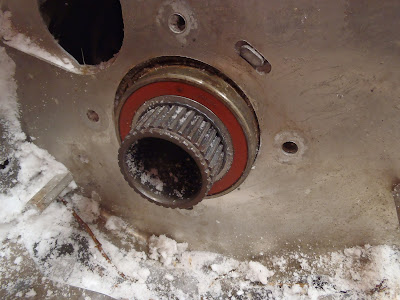Someone brought me the cylinders from their Polaris 550. They had burned a piston and one of the cylinders was a little scuffed up.
This engine has traditional aluminum cylinders with cast iron bores. These are very robust and can take a lot of abuse. Modern (or high performance) engines have cylinders that are all aluminum with some kind of chrome or Nikasil plating on them. Plated cylinders allow for greater engine performance (I think it is due to better heat transfer ability), but they don't seem to be as durable when things blow up. Once the plating starts to flake off the bore you need to have the cylinder replated or replaced.
For this job I am using a cheap "glaze breaker" type tool. This tool is inexpensive and available at any auto parts store. It is not a true hone. It is only used to fixing minor surface defects. If you have a cylinder that needs to be resized or you need to fix an out of round condition you need a much more complicated and expensive hone like this.
I normally clamp the cylinder to the edge of the work bench and place a pan under it to catch any cutting oil that drips out.
Put the hone in a variable speed drill and insert it into the bore. Make sure to coat the bore with a light weight oil. The hone should be spun at a slow speed and moved up and down while it is spinning.






















